State
Tribe Name
Art Type
short description
Faisal, who wrote "Do Pattar," is a poet deeply connected to Gojri Geet traditions, bringing the essence of Gojri culture alive through his poetry. His work usually delves into profound feelings, particularly love and yearning themes, using cultural symbols and folklores. Faisal's attachment to his culture makes his work richer since he is able to express common experiences of love, hurt, and nostalgia, which find correlation in readers across cultures.
Thumbnail
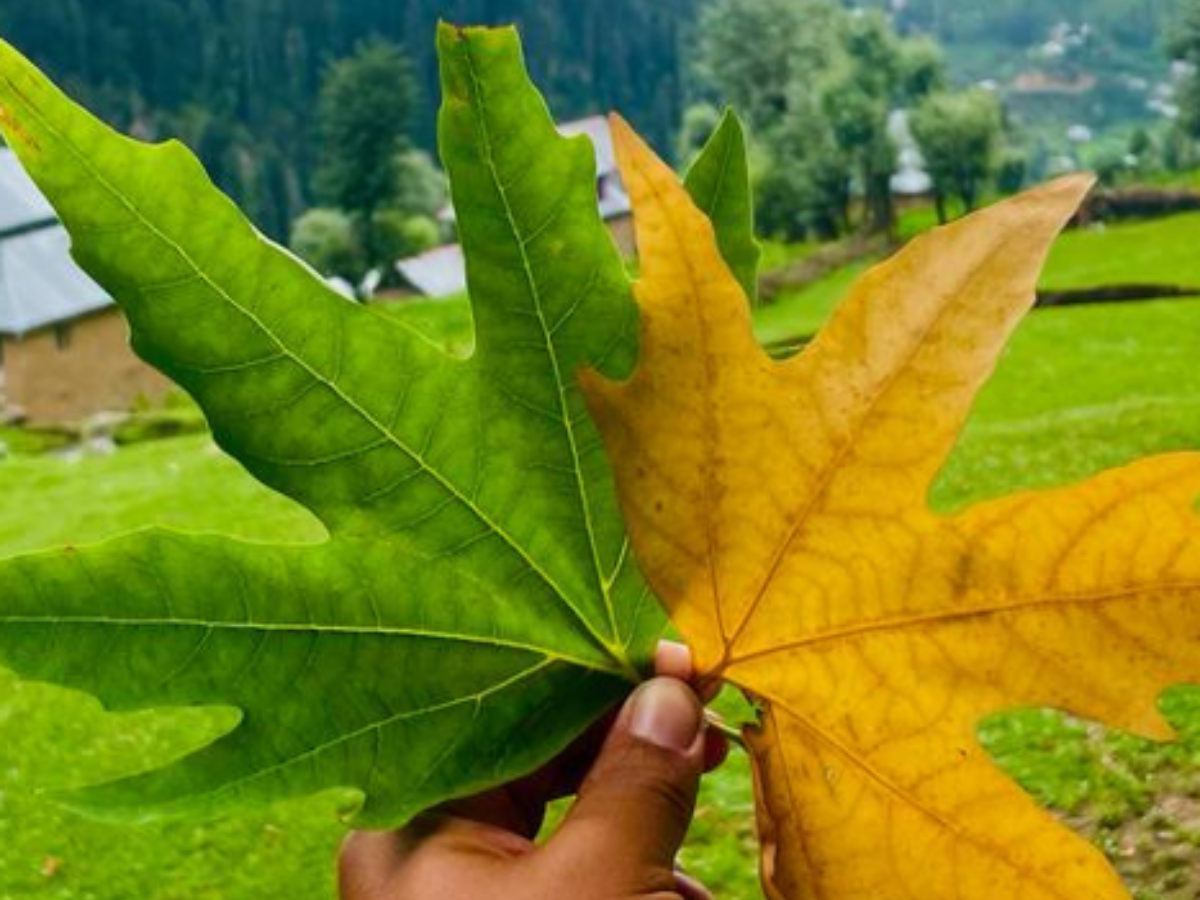
Filter Postion
Right
Filter Background
Off
Theme
Filter Header Image
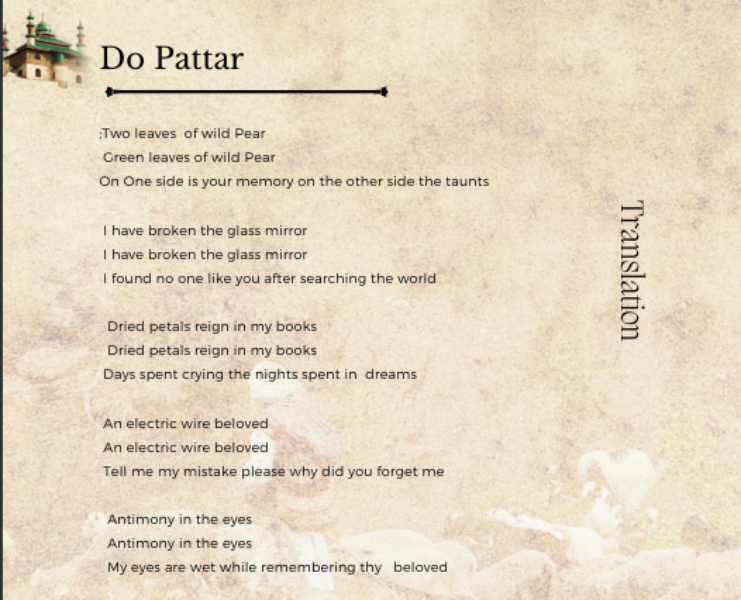
content
Image

description
Faisal, who wrote "Do Pattar," is a poet deeply connected to Gojri Geet traditions, bringing the essence of Gojri culture alive through his poetry. His work usually delves into profound feelings, particularly love and yearning themes, using cultural symbols and folklores. Faisal's attachment to his culture makes his work richer since he is able to express common experiences of love, hurt, and nostalgia, which find correlation in readers across cultures.
Image Mode
portrait
Image
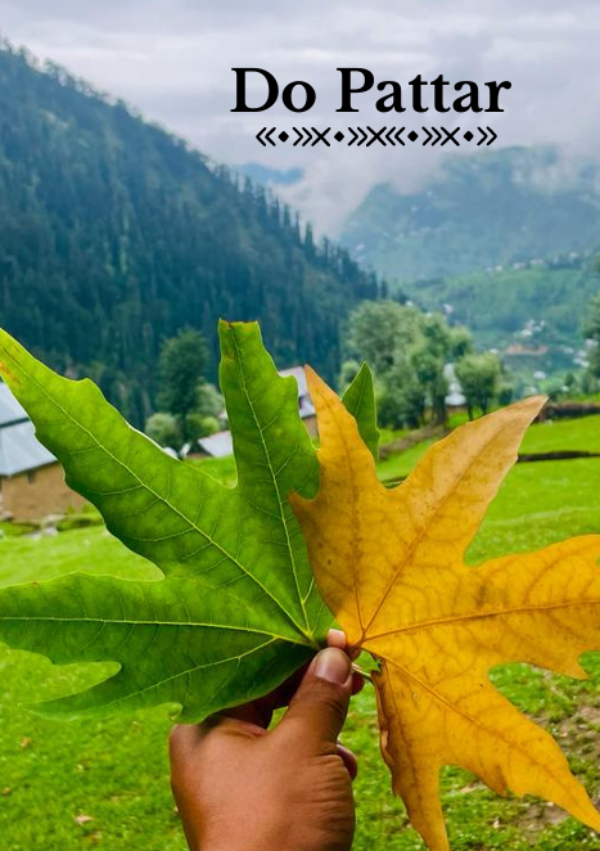
description
Do Pattar" is a lyrical verse poem in the style of Gojri Geet poetry, with a rhythmic emphasis that underscores the poem's emotional complexity. Each stanza exposes various shades of the narrator's grief, memory, and yearning, generating a layered emotional experience. The repetition of lines, e.g., "I have shattered the glass mirror," underscores the pain of the speaker, giving a musical feel that brings alive the Gojri tradition by means of repetition and echoing words.
Image Mode
portrait
Image
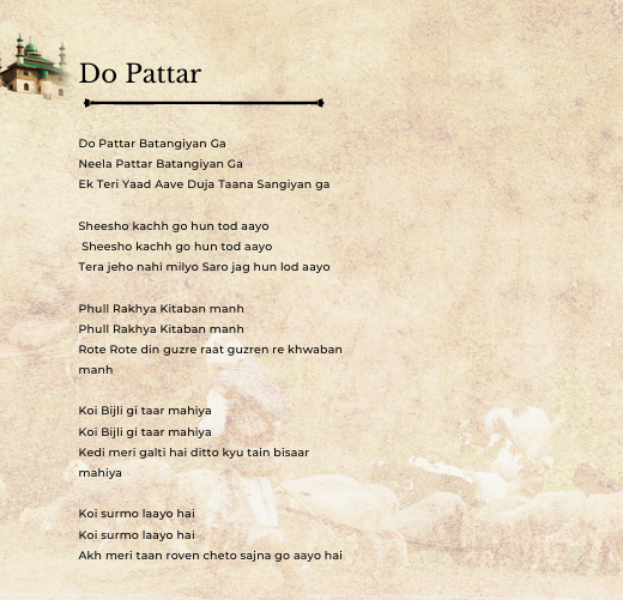
description
The rhyme scheme in "Do Pattar" is casual, mimicking the spontaneous rhythm of Gojri dialect and folk lore. The poem employs repetitive lines and parallelism to achieve rhythm instead of strict rhyme, lending the poem an air of music. This flexibility in rhyme achieves the spontaneity and natural expression typical in Gojri Geet so that the emphasis can be laid on the emotion of each line instead of a formal pattern.
Image Mode
landscape
Image
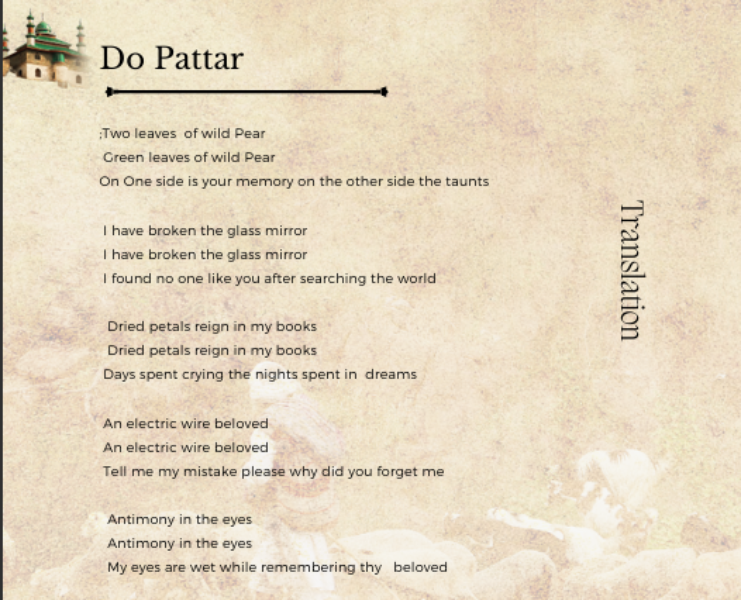
description
The tone of "Do Pattar" is a blend of sadness and introspection, with themes revolving around love, desire, and loss. As the narrator navigates through recollections, the tone changes from reminiscence to deep sorrow, describing the narrator's failed love and unresolved questions. Details such as the shattered mirror and withered petals amplify this feeling of nostalgia and desire, rendering the poem an introspection on love's emotional bipolarity.
Image Mode
landscape
Image
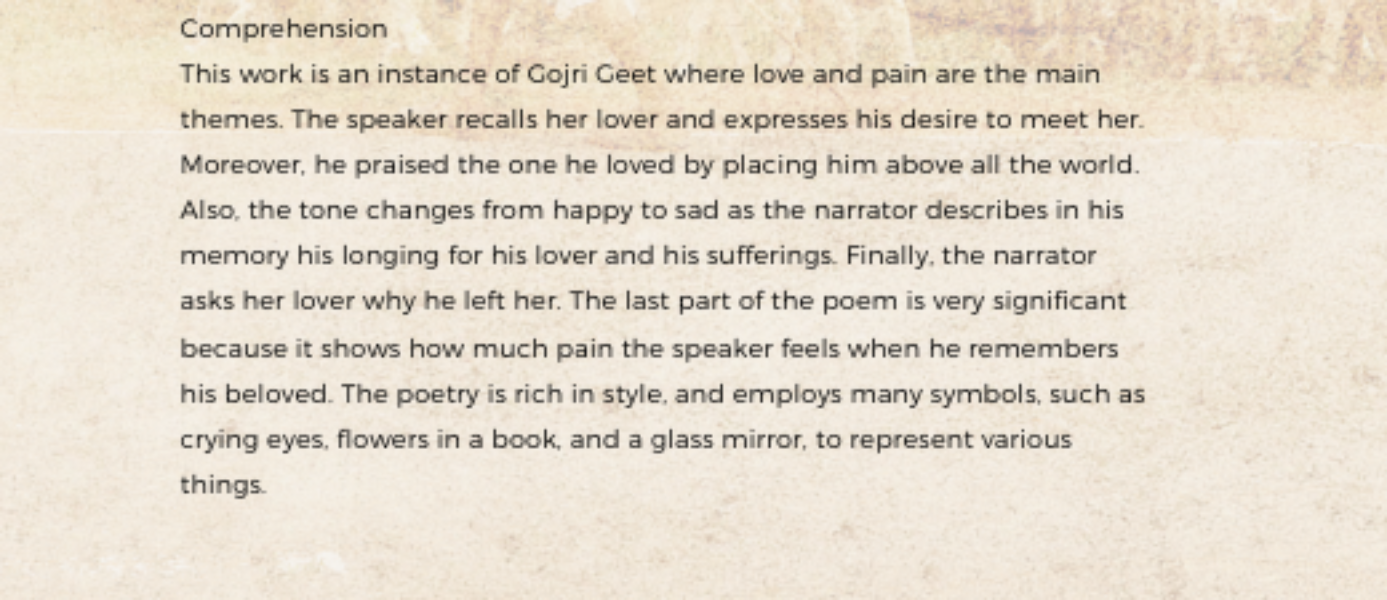
description
Based on heartbreak and nostalgia, "Do Pattar" traces the emotional path of the narrator, that of remembrance and unhealed hurt. Faisal uses strong symbols like leaves, a mirror, and flowers in books to symbolize memories and unhealed sentiments. The symbols reinforce the narrator's long-lasting pain, reflecting a strong and eternal feeling of yearning. The poem is a testament to love's enduring, bitter effect on the human soul.
Image Mode
landscape
promoted
Off
Verified
On
